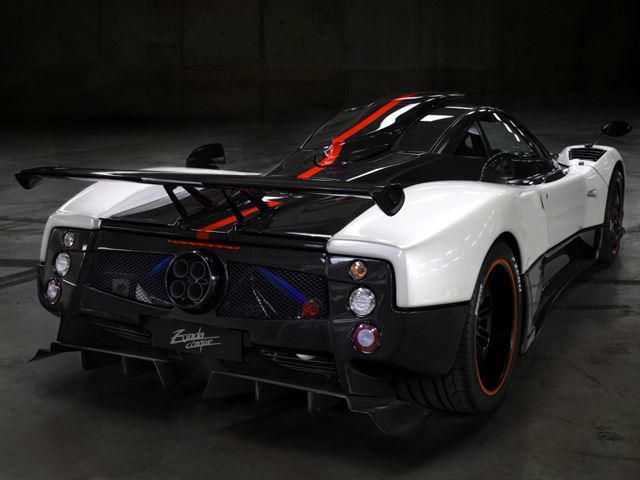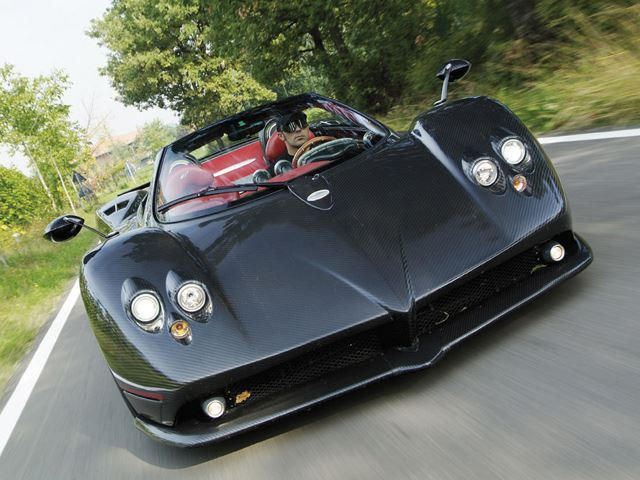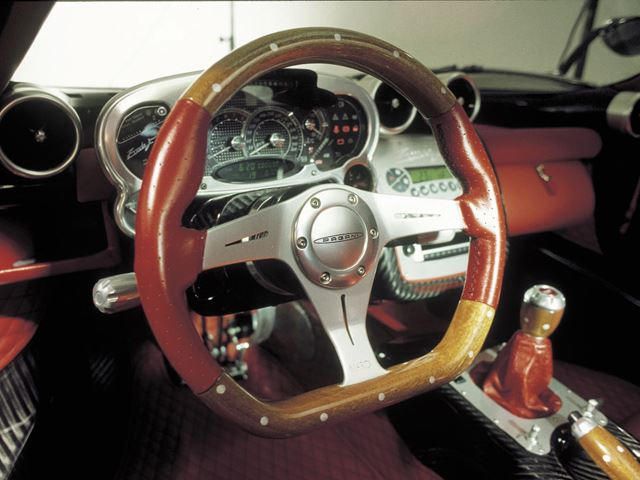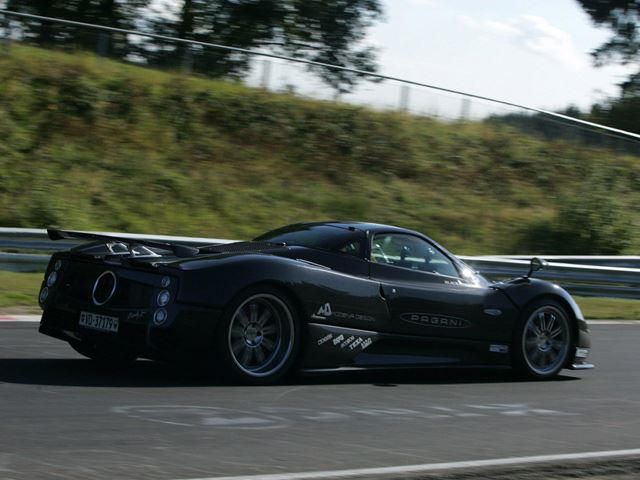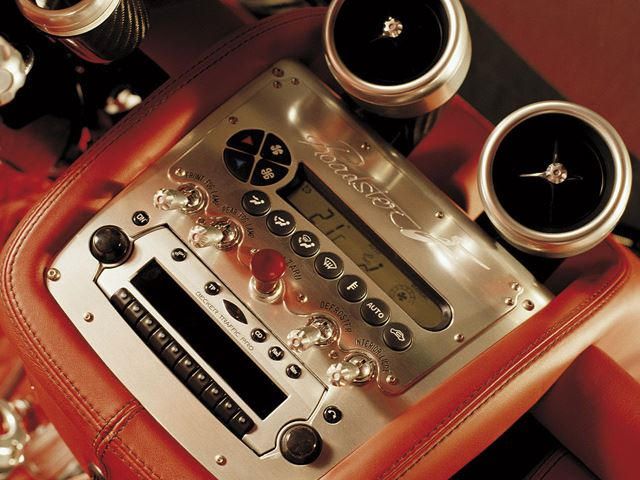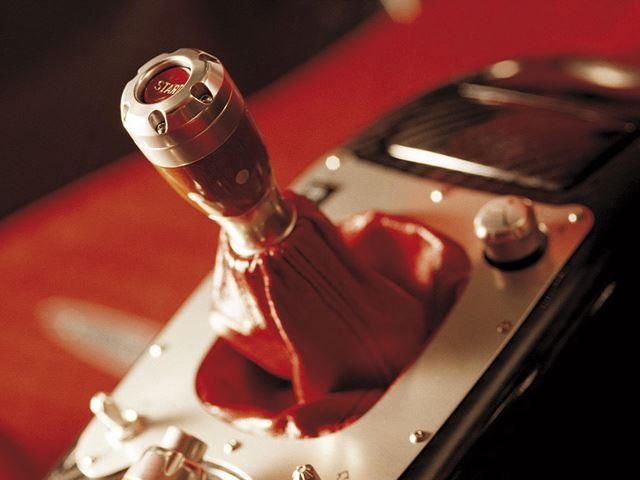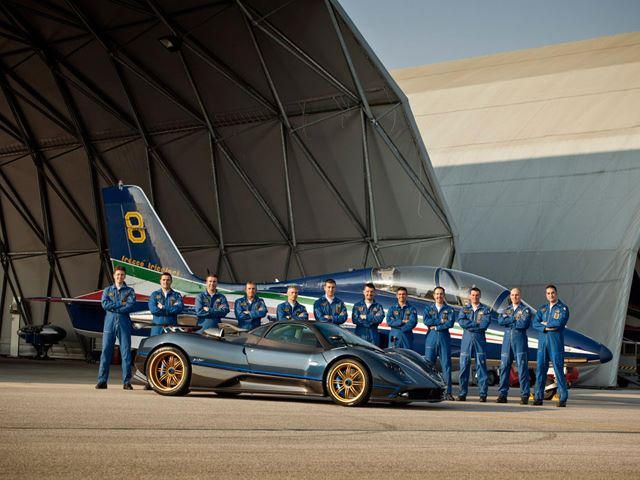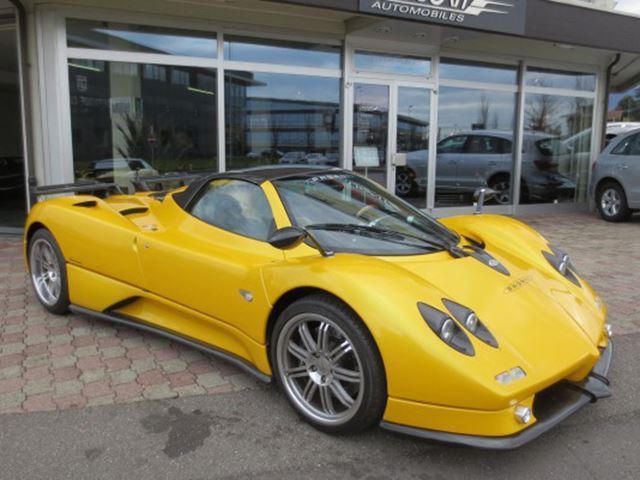
It was almost as if the guy and his car came out of nowhere. That's how some in the industry viewed Horacio Pagani and his Zonda. Oh, and today (November 10) is Mr. Pagani's birthday. Sir, we wish you many, many more. As you read yesterday, the Zonda's development started in 1992 and seven years later it had its public debut at Geneva. People took notice, as did the likes of Ferrari and Lamborghini. Pagani is also headquartered in Modena, as are both Ferrari and Maserati.
Point being is that Pagani was the real deal. The Zonda C12, built according to racing car thinking, techniques and materials, was proof. And now we need to explore the various versions of the Zonda that appeared throughout its 12-year production run. By 2002, the Zonda S 7.3 had its debut. This time, however, power came in the form of an exclusively AMG-built 7.3-liter V12 with 555 hp and 550 lb-ft of torque. Top speed was recorded at 198 mph. What was different, visually? There were improved aerodynamics, such as the rear flaps and a slightly restyled front end. This time, however, Pagani added traction control and anti-lock brakes as standard.
The following year saw the reveal of the Zonda S 7.3 Roadster, which was identical to the coupe save for the drop-top and a slight weight gain of 66 lbs. Once again, each car was entirely bespoke, built to each customer's tastes. All told only 40 units were built. Forever loyal to his mentor, Pagani released the Zonda F in 2005. "F" as in Fangio. Fangio as in Formula 1 legend Juan Manuel Fangio. The Zonda F, though powered by the same 7.3-liter V12, had some significant changes over its predecessors. For example, it featured a reprogrammed ECU which, along with enhanced intake manifolds and exhaust, increased output to 650 hp and 575 lb-ft.
Bodywork was also updated with a new front end, rear spoiler, additional aerodynamic vents and restyled side mirrors. Carbon ceramic brakes became optional as well. The Zonda F Roadster came next, in 2006, and save for its removable carbon fiber roof, was identical to the coupe. Remarkably, it gained only 11 lbs, and achieved a Nurburgring lap time of 7:29. The Clubsport version was a few seconds faster, clocking in at 7:24.7. Jumping ahead to 2009, the Zonda Cinque was launched and was considered "the most extreme road-legal Zonda ever created." In fact, it was essentially a street legal version of the Zonda R, that track-only terror we'll discuss in the coming days (along with the Zonda Revolucion).
Why the name Cinque? Because Cinque is five in Italian, and only five examples were built, each costing over $2 million. Like its R counterpart, the Cinque had a number of innovations, such as a wider front splitter, an adjustable rear spoiler, and a modified rear flat underbody and slide. That roof-mounted air intake and air inlets on the rear engine cover aren't just for show; they're functional tools that help "feed the engine and enhance airflow to the brake discs and the entire wheel hub group," according to Pagani. A six-speed sequential gearbox replaced the manual unit, allowing for shift times to happen in less than 100 milliseconds. The result? A new 0-62 mph time of 3.4 seconds. Top speed was clocked at 217 mph.
The suspension was improved with titanium and magnesium components as well. Staying true to his passion for carbon fiber innovation, Pagani introduced something called "carbo-titanium," an advanced form of carbon fiber. Like its name suggests, titanium was added to increase strength and rigidity. Because tradition called for it, a Cinque Roadster came next, sharing the coupe's 678-hp 7.3-liter V12, cutting-edge innovations, and a production run of five units. The original idea was to end Zonda production entirely after the Cinque, but there was still enough demand for more. Pagani obliged with several one-off cars, built specifically to order by wealthy customers all over the world.
However, one Zonda that was intended as a one-off turned into a limited production run of three. That was the Zonda Tricolore, built as a 50th anniversary tribute to Italy's aerobatic team, called the "Frecce Triocolori." For the most part, it was the same as the Zonda Cinque, the most significant exception being its unpainted body. A clear blue lacquer with red, white and green stripes along the front that flow through the roof. Every Zonda you've just read about is worth a few million dollars today, despite some early examples going for about half a million. These values will only increase over time, especially when it comes to those special order one-off and track-only Zondas, all of which will be discussed in detail in the coming days.

